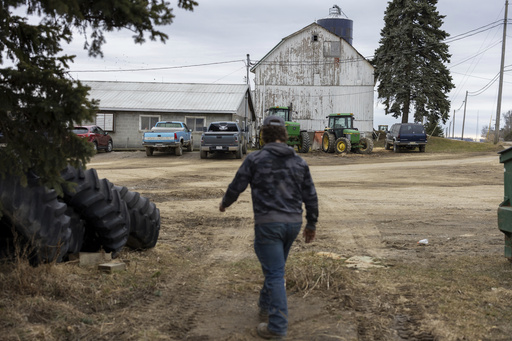PERRY, N.Y. — Briar Townes, a high school graduate from the rural expanses of Wyoming County in western New York, nurtures aspirations of transforming his passion for art into a career. During his high school years, he excelled in college-level drawing and painting classes, earning credits that could advance his education. However, pursuing a college degree isn’t part of Briar’s plans.
Since his graduation in June, Briar has been leading an art camp organized by the county’s Arts Council. He hopes to secure a permanent role there, but other opportunities exist in local enterprises. Options include positions at the “cookie factory,” Creative Food Ingredients, or factories like American Classic Outfitters, which specializes in designing and sewing sports uniforms. “My stress is picking an option, not finding an option,” Briar stated.
Although rural students tend to have higher high school graduation rates than their counterparts in urban and suburban areas, fewer pursue college education. School districts in places like Perry have been stepping up efforts to make higher education more accessible by offering college-level coursework and dismantling barriers, both academic and financial. Despite these initiatives, rural students often face challenges such as the need to travel further for college, and they may come from families with less experience in higher education. Political narratives sometimes fuel skepticism about the value of a college degree.
As a result, college enrollment among rural students has remained relatively unchanged, even as universities enhance their recruitment strategies. Data from the National Student Clearinghouse Research Center reveals that approximately 55% of rural high school graduates in 2023 went on to college, compared to 64% of suburban and 59% of urban graduates.
Research by the Social Security Administration indicates that higher education can substantially boost income potential. Men with a bachelor’s degree can earn an estimated $900,000 more over their lifetimes than those with only a high school diploma, with women seeing a difference of about $630,000.
In Wyoming County, lack of a college degree hasn’t significantly hampered opportunity. Home to more cows than people, the local economy thrives on dairy farms, potato fields, and maple sugar houses.
“College has never been a necessity in my family,” Briar mentioned, hailing from a family where his father runs a tattoo shop. The area’s high school, led by Superintendent Daryl McLaughlin, emphasizes guiding students in line with their ambitions and community values. Alongside college programs, the school also supports career and technical education in trade fields. McLaughlin describes the goal as ensuring students are prepared for whichever path they choose, whether it be college, military service, or employment.
In recent years, Perry’s college enrollment rates have surpassed national averages, rising to 67% for the class of 2024. A strategic application of federal pandemic relief funds allowed the district to cover tuition for its Accelerated College Enrollment program, associated with Genesee Community College.
Nationally, programs like dual enrollment, which enable students to take college courses while in high school, have gained traction. However, rural access remains slightly behind urban and suburban areas, according to an Education Department survey. The College in High School Alliance is actively working to close this gap, funding initiatives in several states.
Beyond financial concerns, many in rural America express skepticism about the value and intentions of higher education. Andrew Koricich, leading the Alliance for Research on Regional Colleges, acknowledges these perceptions, advocating for increased awareness of the financial benefits college can provide.
Government analysis shows that about 21% of those over 25 in rural regions hold bachelor’s degrees, versus around 36% in other areas. Despite this, some rural educators, like Joe Theobold in Putnam County, Florida, encourage college applications. Theobold sets ambitious goals for college admission at his school, surrounded by industries that offer middle-class stability.
In Perry, high school junior Devon Wells, having grown up on a farm, plans on entering hands-on careers like welding or line work, preferring these paths over college.
Neither Devon’s nor Briar’s parents have dictated their educational choices, urging them to decide for themselves. Briar mentioned his openness to exploring college if recruiters had approached but was not keen on relocating far.


